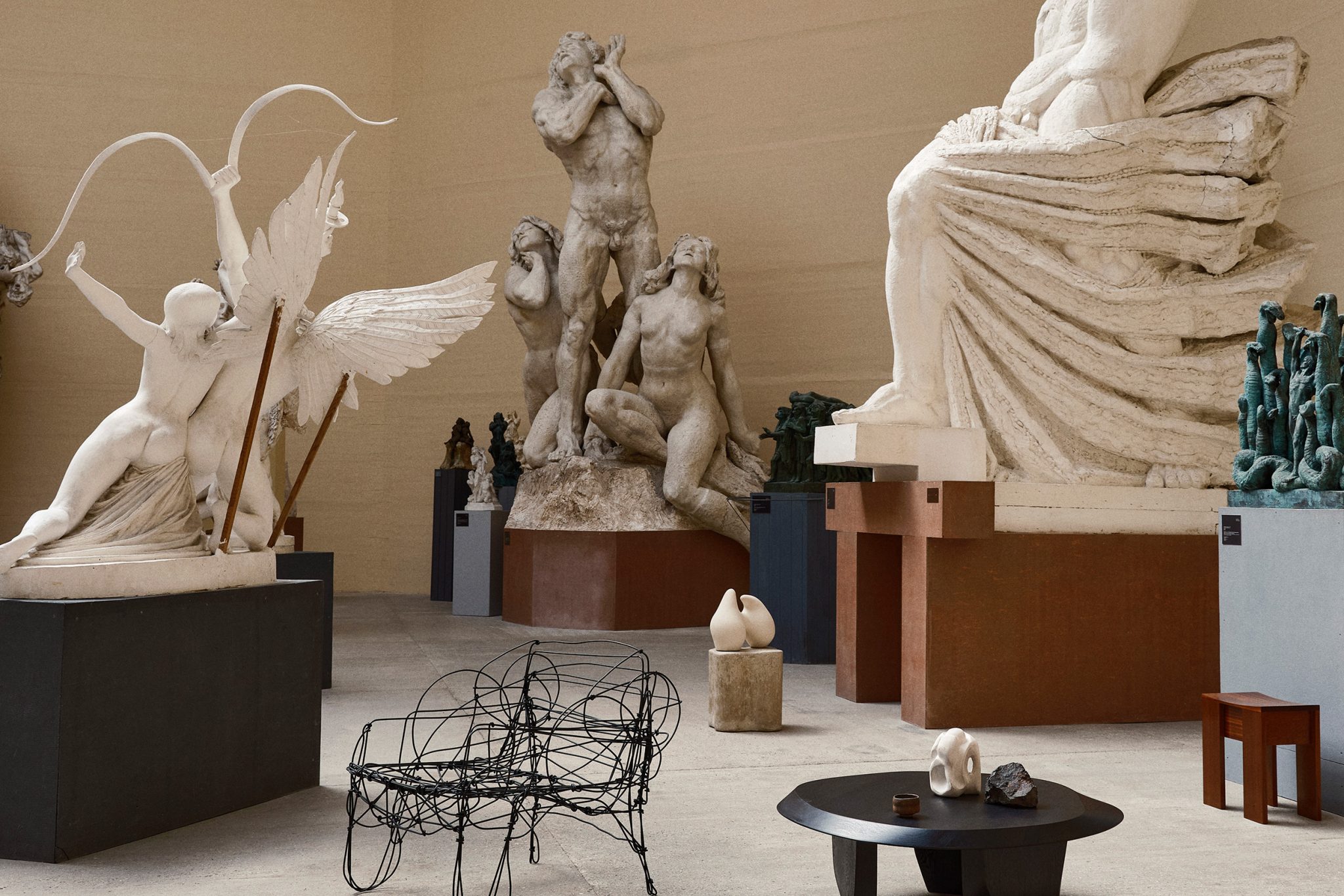
The Rudolph Tegner Museum
In covenant with my soul
Almost hidden in the solitude of undulating fields wrapped in deep purple heather, the Rudolph Tegner Museum breaks the otherwise idyllic surroundings seemingly like an impenetrable closed concrete monolith. But appearances can be deceiving, hiding beauty inside, which is exactly the case with this unequaled space.
Entering the small wooden door slightly pushed back in the high massive front wall, a bright and beautiful room appears housing the life work of an artist with a rare talent and astounding technical abilities for making naturalistic sculptures. White cast sculptures adorn every corner, ranging from monumental ones that reach the ceiling to smaller pieces on pillars throughout the space. This arrangement resembles an atelier, appearing uncurated and immediate. Light breaks through only from above, leaving every wall to be the perfect canvas for the story each piece tells.
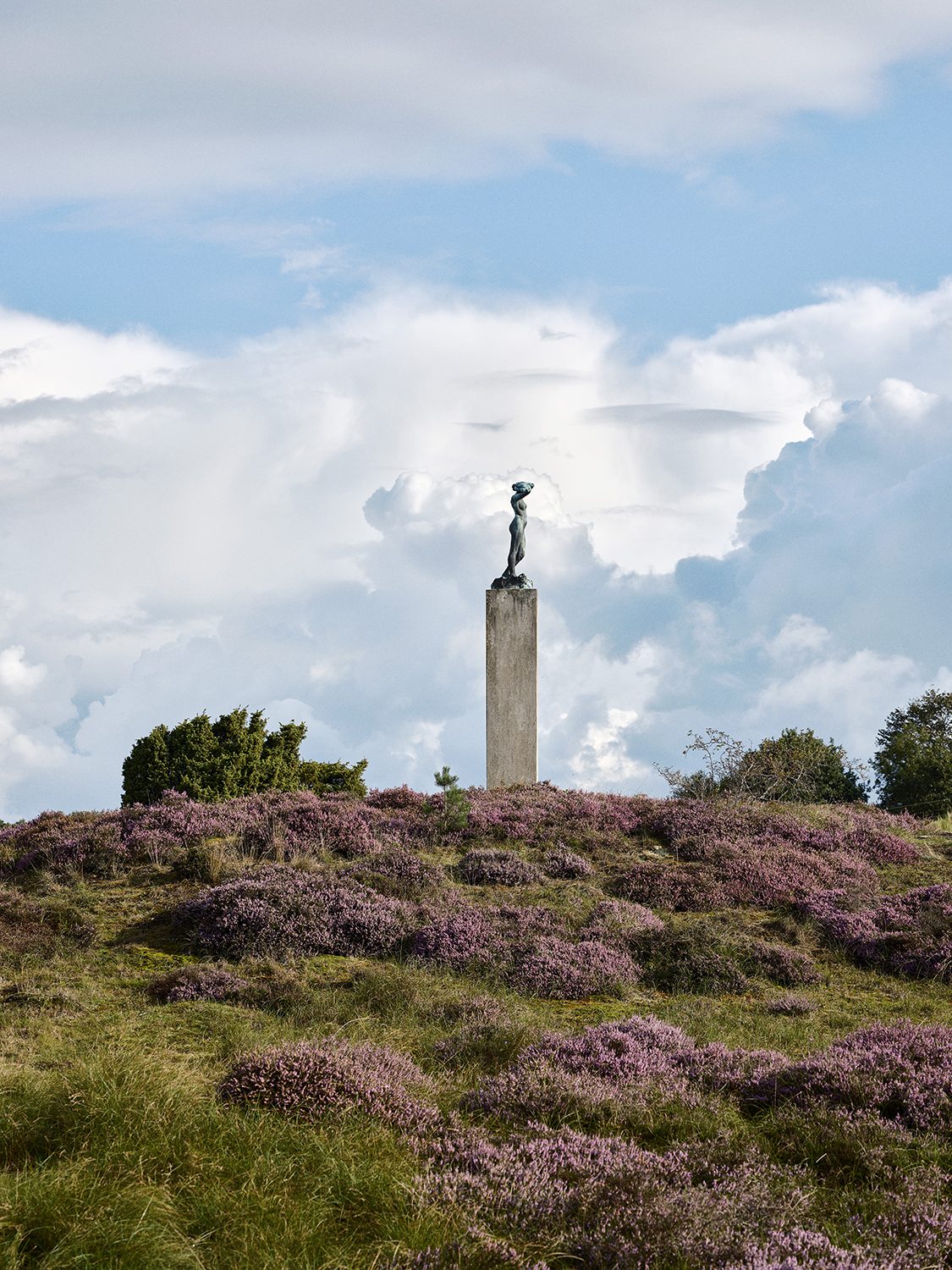
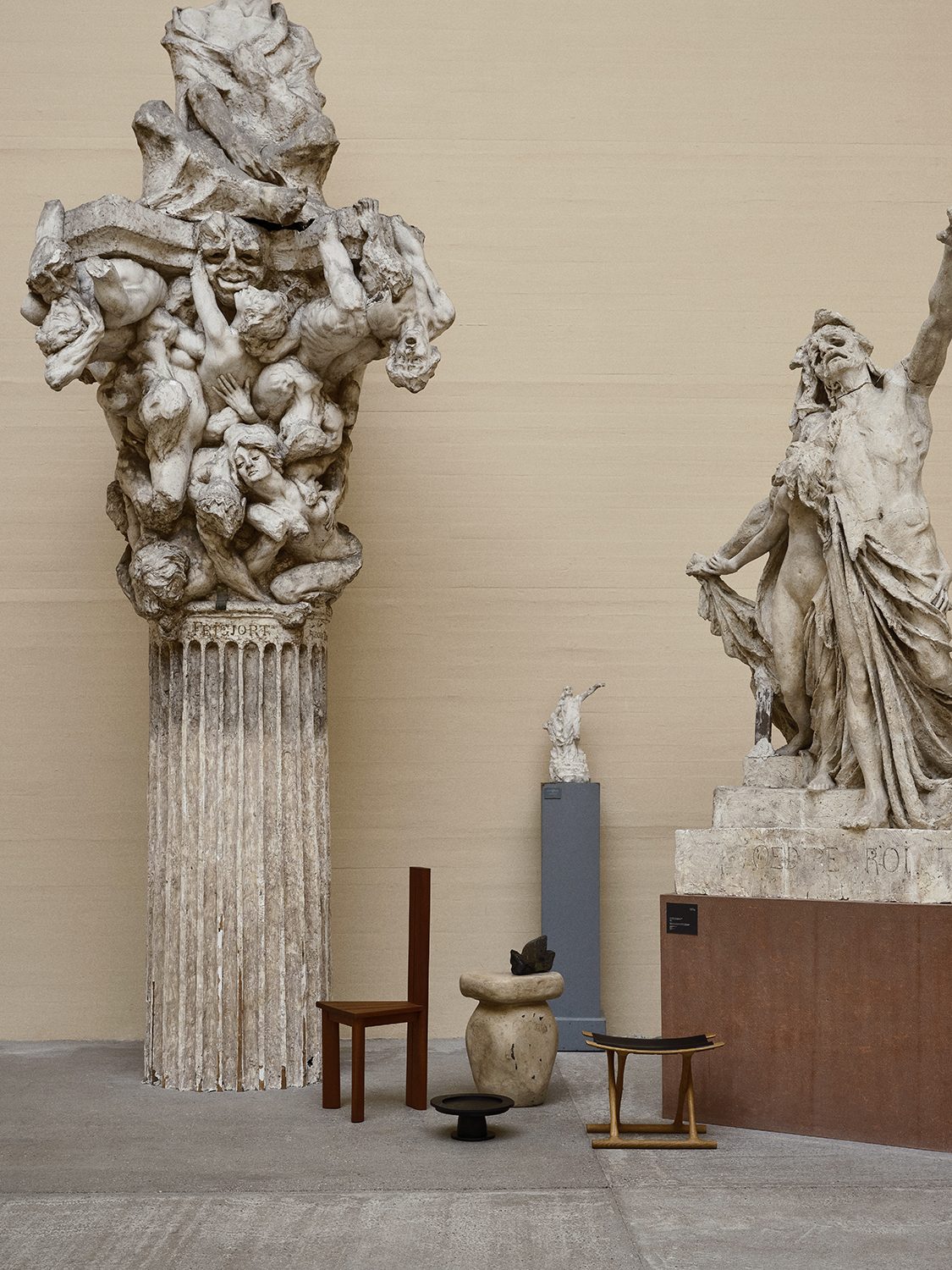 BELLA Chair by Bettina Nelson. Side Table 03 by LULA STUDIO. C + K PEDESTAL Plate by CHRISTIAN + JADE From FORA PROJECTS. OW2000 EGYPTIAN Stool by OLE WANSCHER from CARL HANSEN & SØN.
BELLA Chair by Bettina Nelson. Side Table 03 by LULA STUDIO. C + K PEDESTAL Plate by CHRISTIAN + JADE From FORA PROJECTS. OW2000 EGYPTIAN Stool by OLE WANSCHER from CARL HANSEN & SØN. To create the perfect surroundings for his art, Rudolph Tegner himself drew the building. Tall clean walls with no windows to disrupt focus on what really matters: the art. Mellow light coming from the windows on the ceiling falls softly on the sculptures, revealing every facial expression, drapery, and detail with exquisite precision. Centered around an eleven meters high octagonal room, surrounded by a vestibule that almost hugs the main space, the museum has a very unique form praised by many architects for its significance and importance in the history of architecture.
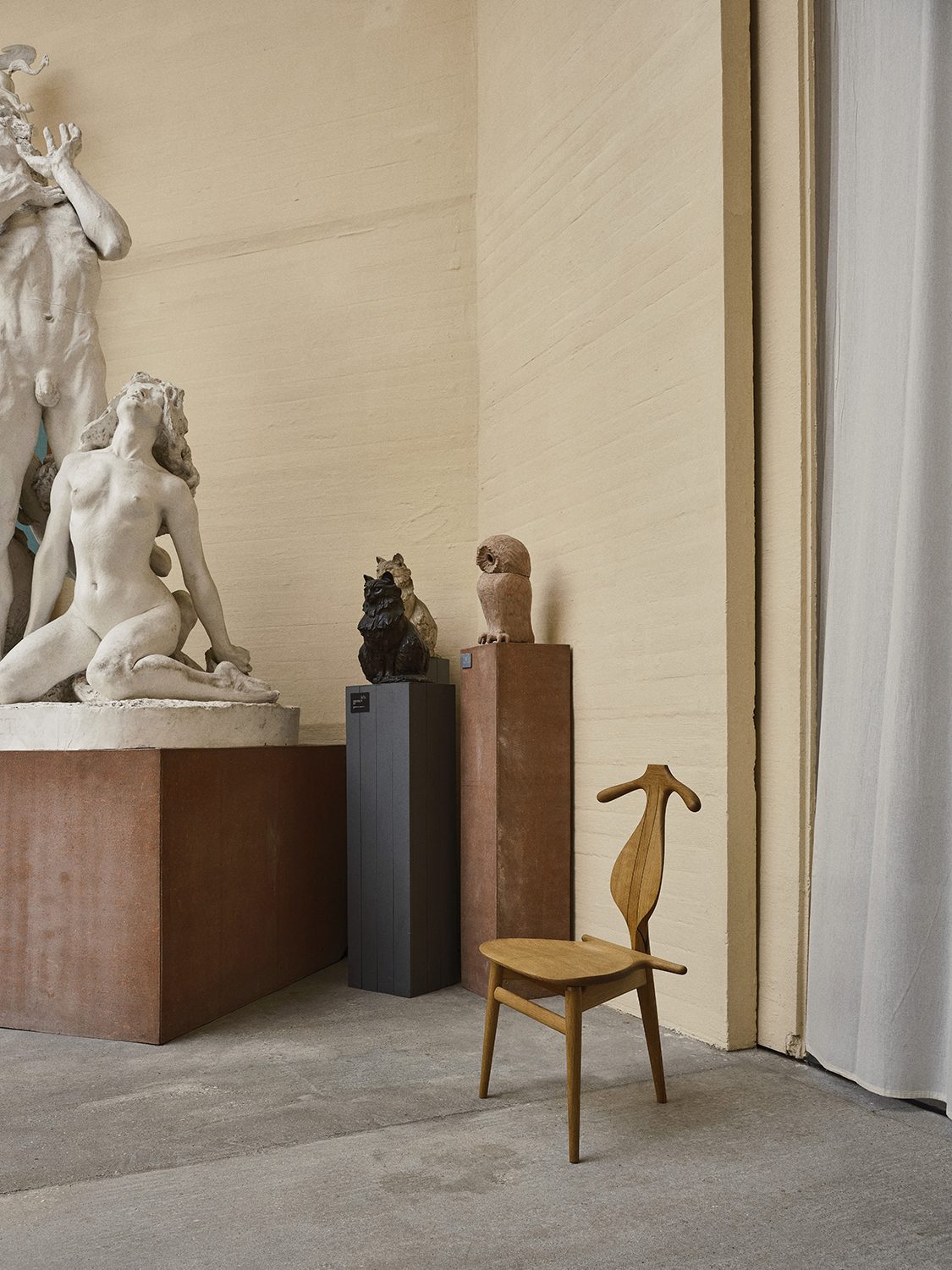 PP250 VALET Chair by HANS J. WEGNER from PP MØBLER.
PP250 VALET Chair by HANS J. WEGNER from PP MØBLER. 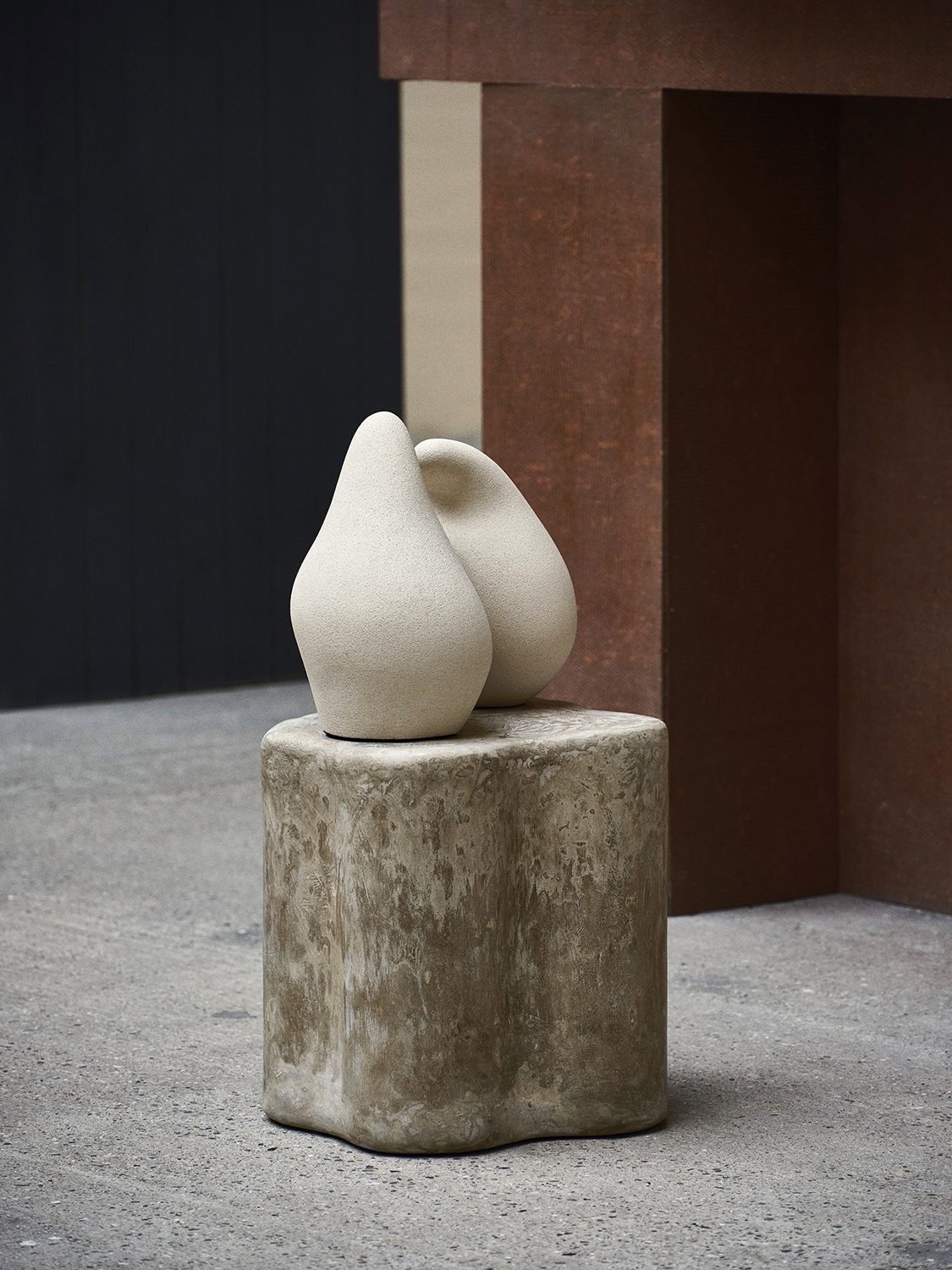 FOUR LEGGED Side Table by LULA STUDIO. Blanca sculpture by HERMINE BOURDIN from RUBY ATELIER.
FOUR LEGGED Side Table by LULA STUDIO. Blanca sculpture by HERMINE BOURDIN from RUBY ATELIER. 
The museum was built from 1937-38 and pioneered the expansive use of concrete. Never before had this material been used as the main component in floors, walls and the ceilings, and this application gave Tegner the freedom to play with dimensions and expression. However, it was also a highly experimental project, which to Museums Director Luise Gomard says a lot about the artist: “In many ways, Rudolph Tegner was ahead of his time. In his art and in the space he built to convey his sculptures. You could say that he made – through this museum in combination with his art – an installation before it even became a term. That was who he was; pushing the boundaries, exploring and daring.”
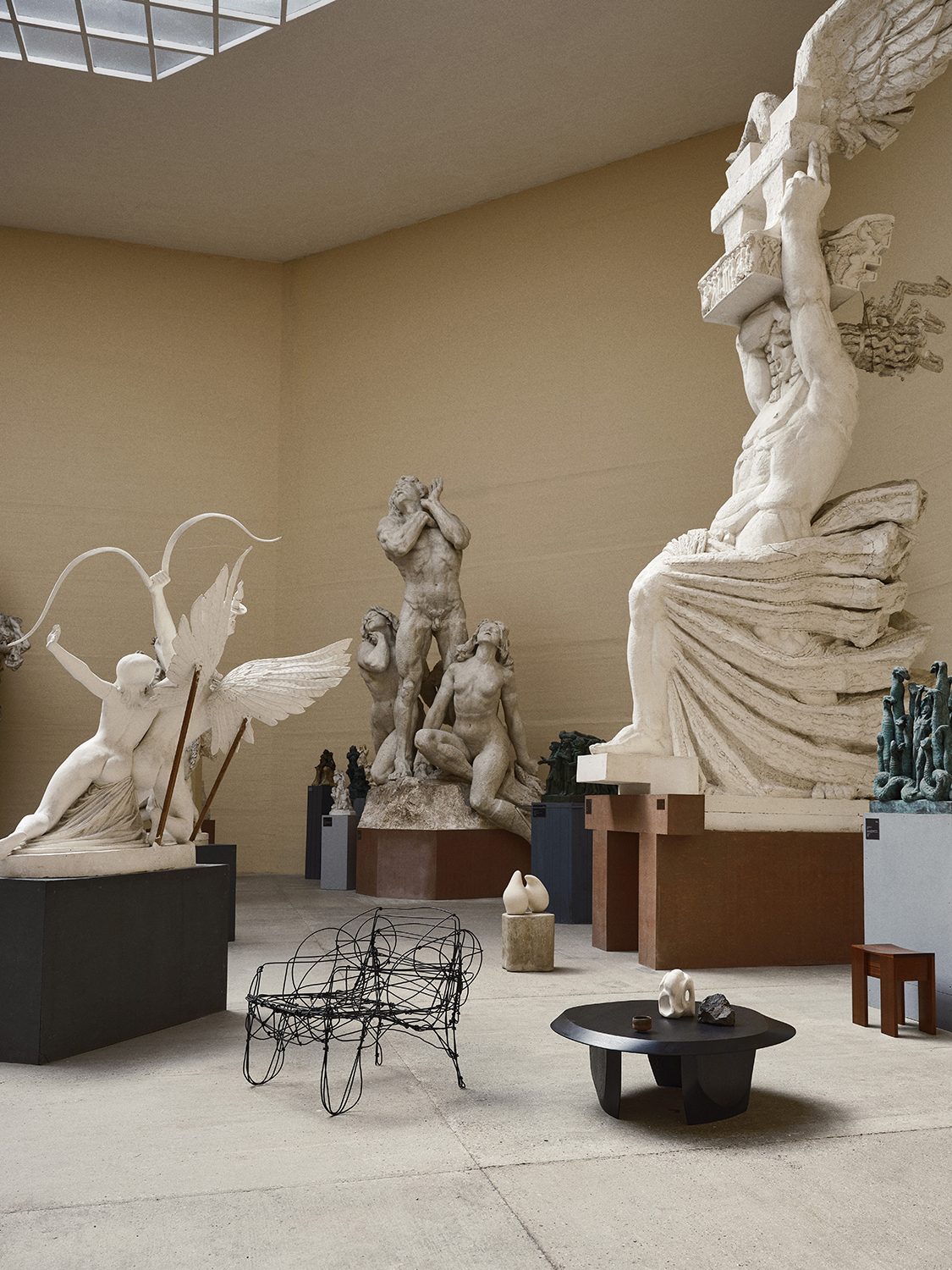 WIRE SKETCH Chair by ANDERS HERMANSEN. SLOPE Table by SOFIE ØSTERBY. CHAWAN Cup by EMMANUEL ALEXIA from LE SENTIMENT DES CHOSES. Ceramic Sculpture from RUBY ATELIER. FOUR LEGGED Side Table by LULA STUDIO. BLANCA sculpture by HERMINE BOURDIN from RUBY ATELIER. WAVE Stool by THOMAS WOLTMANN.
WIRE SKETCH Chair by ANDERS HERMANSEN. SLOPE Table by SOFIE ØSTERBY. CHAWAN Cup by EMMANUEL ALEXIA from LE SENTIMENT DES CHOSES. Ceramic Sculpture from RUBY ATELIER. FOUR LEGGED Side Table by LULA STUDIO. BLANCA sculpture by HERMINE BOURDIN from RUBY ATELIER. WAVE Stool by THOMAS WOLTMANN. 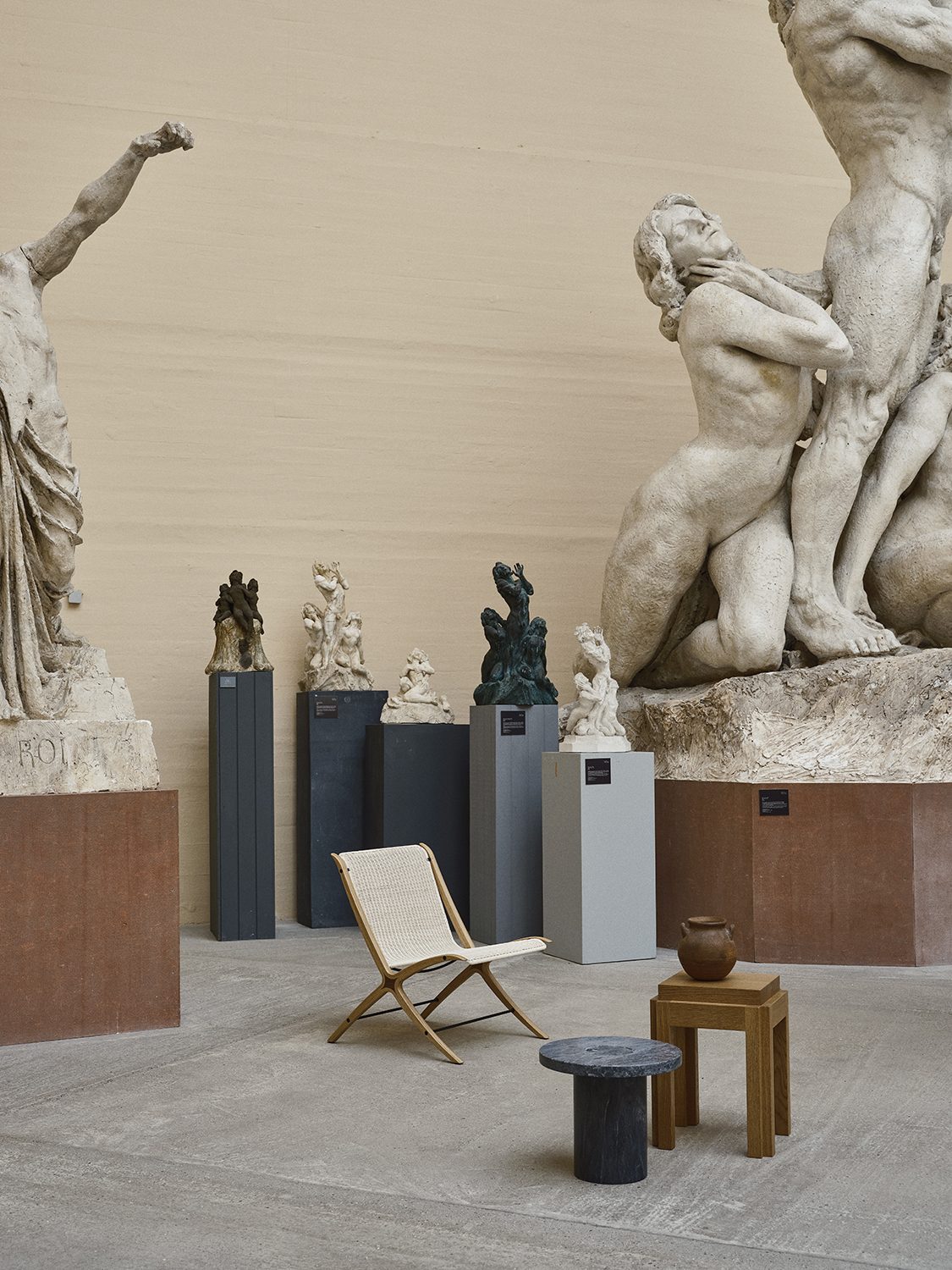 X Chair by HVIDT & MØLGAARD from &TRADITION. SINTRA Table from FRAMA. BD Side Table and Stool by BAHRAINI DANISH from FORA PROJECTS. Vintage Ceramic vessel.
X Chair by HVIDT & MØLGAARD from &TRADITION. SINTRA Table from FRAMA. BD Side Table and Stool by BAHRAINI DANISH from FORA PROJECTS. Vintage Ceramic vessel. Influenced by the artistic movements brewing amongst artists in the beginning of the 20th century, Tegner started to explore symbolism and the idea and essence of his art instead of its naturalistic and realistic qualities. He became an uncompromising, visionary, and revolutionary sculptor. Living in Paris and visiting both Greece and Morocco also affected how he chose to implement his artistic perspective in exhibiting his art. The Acropolis was, for him, a testament to what humans could create; a monument to the ability of greatness in humanity. Referencing the pillars, the architectural process, the light and bombastic expression, Tegner honors his love for Greek history. Likewise, the Moroccan way of living permeates his vision, making an architecture resembling a fortress outside but revealing a hidden treasure inside, like a lush and fresh garden of life.
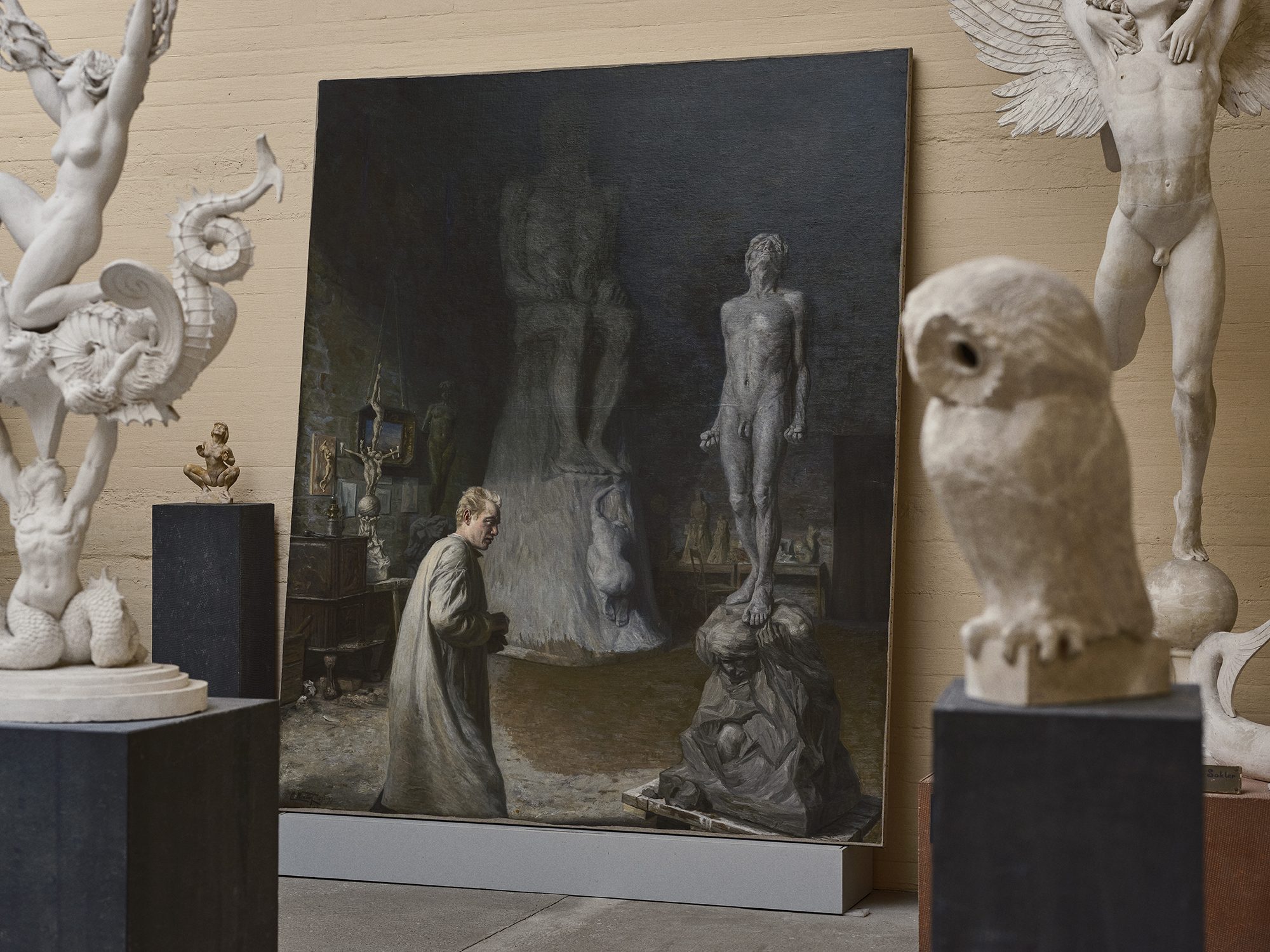
Even though the museum has become an architectural icon, for Tegner, it was never about the architecture itself, but always about how to elevate the art. But his vision, desire and ability to evolve clearly affected his creation of the space being as forward looking as it is. Unfortunately, this personality trait also had its cost. During his artistic life, his work and perspective on the world was not appreciated, and he felt alienated and misunderstood. Gomard states: “Even though people recognized his talent from a very early age – he was 17 years old when he started at the Royal Academy of Arts in Copenhagen – he struggled with recognition throughout his life.
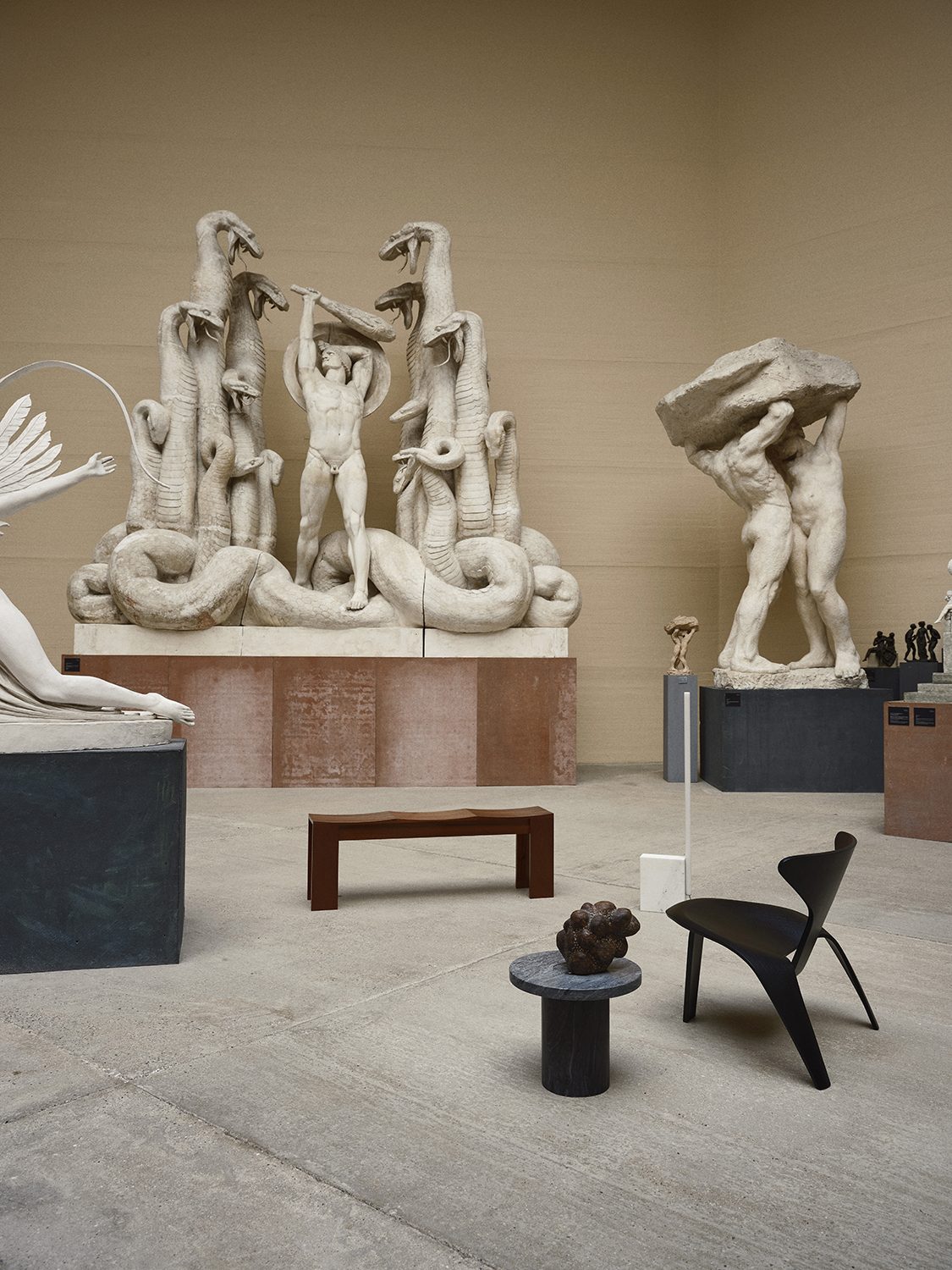 SINTRA Table from FRAMA. FORMIA Brown Sculpture by OLE MYNSTER HEROLD from RUBY ATELIER. PK0 Chair by POUL KJÆRHOLM from FRITZ HANSEN. RELAY 1 LAMP by MICHAEL ANASTASSIADES from ANKER & CO. WAVE Bench by THOMAS WOLTMANN.
SINTRA Table from FRAMA. FORMIA Brown Sculpture by OLE MYNSTER HEROLD from RUBY ATELIER. PK0 Chair by POUL KJÆRHOLM from FRITZ HANSEN. RELAY 1 LAMP by MICHAEL ANASTASSIADES from ANKER & CO. WAVE Bench by THOMAS WOLTMANN. 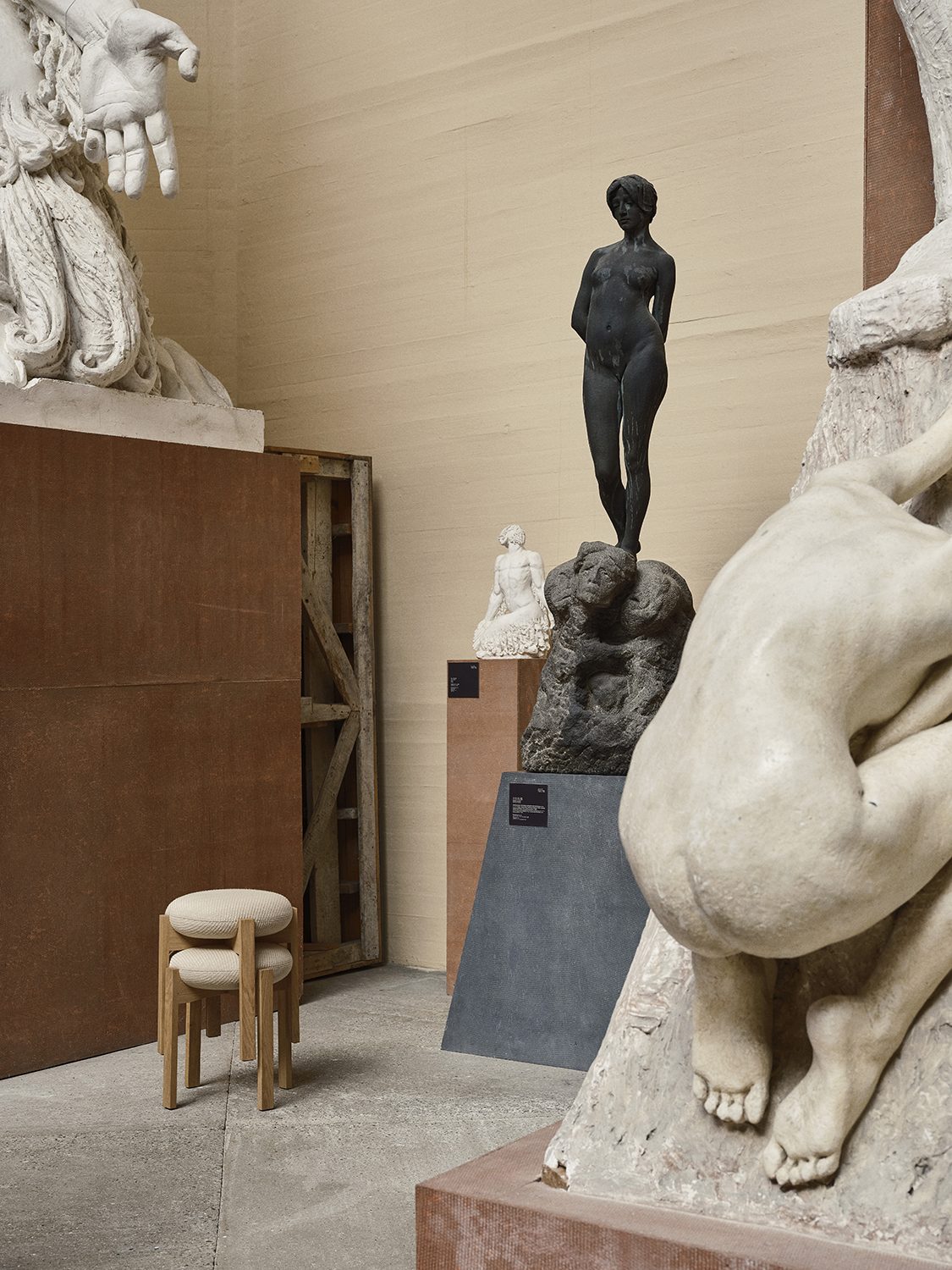 PIONEER Stools by MARIA BRUUN from FREDERICIA.
PIONEER Stools by MARIA BRUUN from FREDERICIA.In the beginning he was seen as the biggest sculptor since Bertel Thorvalsen, which he was, but his desire to take the field of sculptures to a new place made him controversial. He went from doing realistic art pieces to a place where the idea and spirit of the piece was more important. This he got a lot of critique for.” This also affected and impacted how he created the museum, the design and architectural choices he made about the building: alienated from the outside world, like a shield protecting his passion, work and life inside.
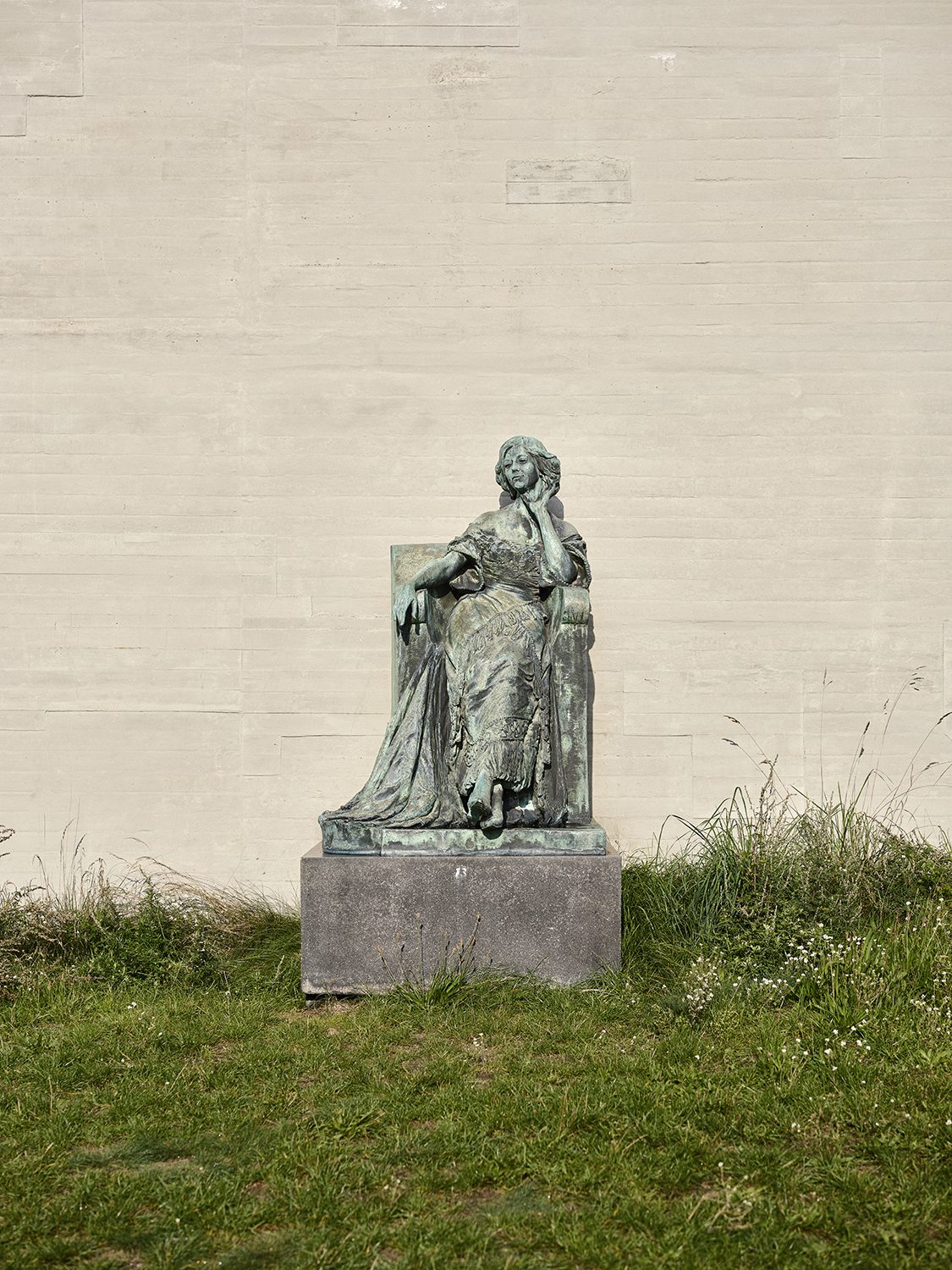
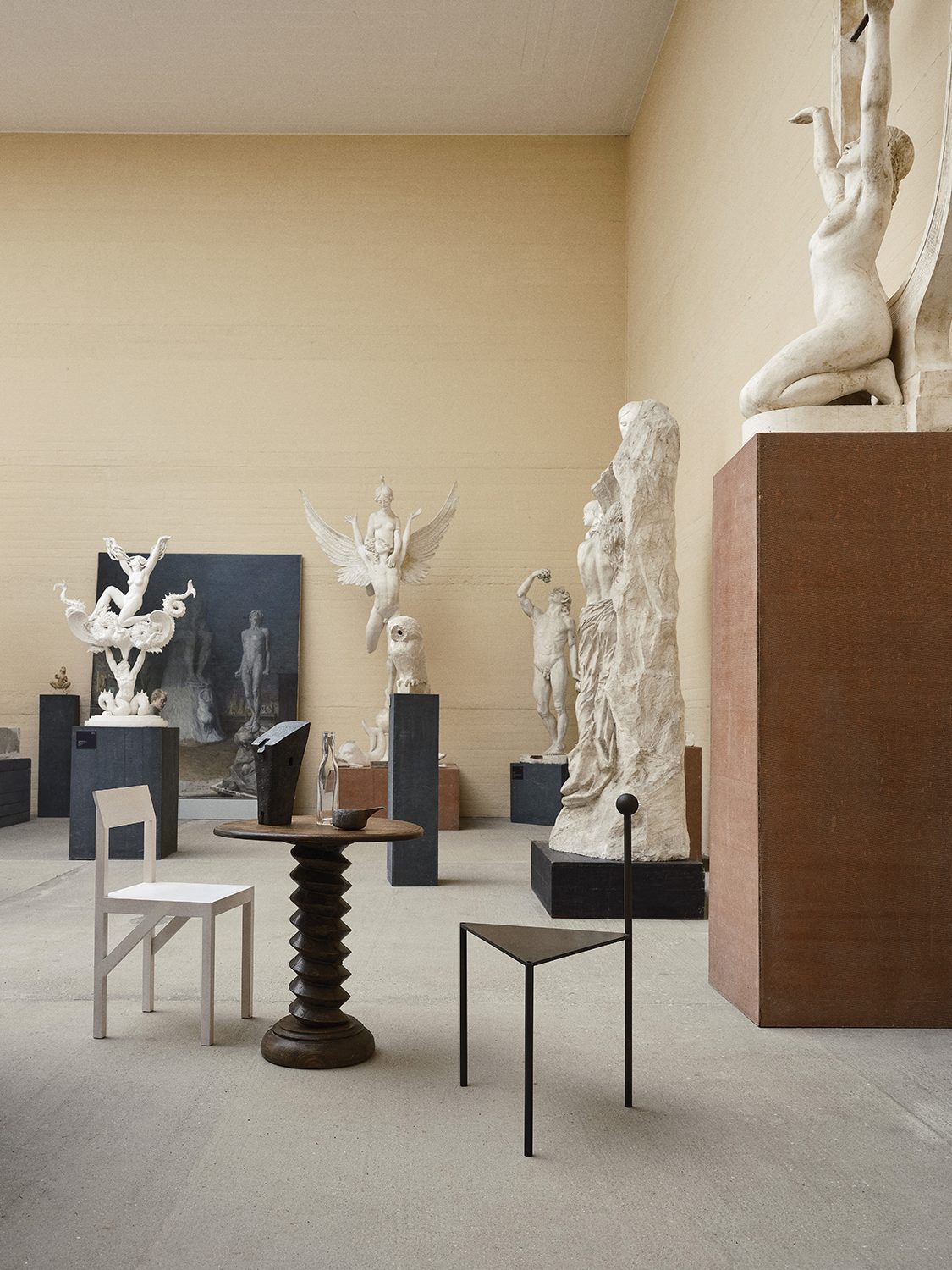 BRACKET Chair by FREDERIK GUSTAV from FRAMA. PEDESTAL Table from RUBY ATELIER. Sculpture, Untitled, by GUNHILD AABERG from RUBY ATELIER. 0405 Bottle by NIKOLAJ MENTZE from FRAMA. Tea Pitcher by EMMANUEL ALEXIA from LE SENTIMENT DES CHOSES. ARCHETYPE SPHERE Chair by SOFIE ØSTERBY.
BRACKET Chair by FREDERIK GUSTAV from FRAMA. PEDESTAL Table from RUBY ATELIER. Sculpture, Untitled, by GUNHILD AABERG from RUBY ATELIER. 0405 Bottle by NIKOLAJ MENTZE from FRAMA. Tea Pitcher by EMMANUEL ALEXIA from LE SENTIMENT DES CHOSES. ARCHETYPE SPHERE Chair by SOFIE ØSTERBY. 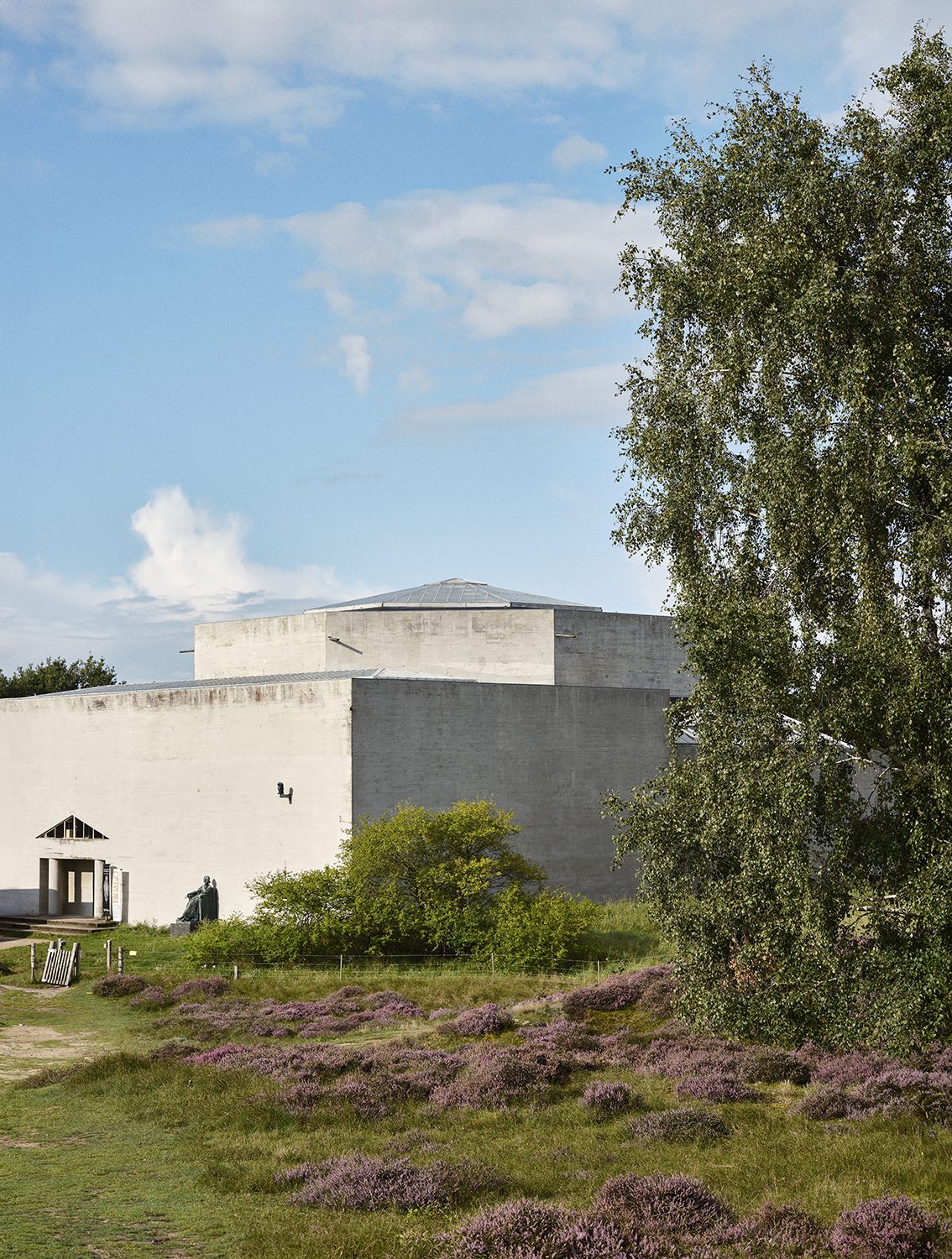
The museum represents both tradition and modernism in one; a view bound to history but also an urge to look beyond and explore new perspectives on how to look at and convey the future. Celebrating Danish furniture design throughout time – sculptural, daring, traditional or expanding form and materials – the museum therefore only naturally becomes the perfect frame to portray these furniture pieces.
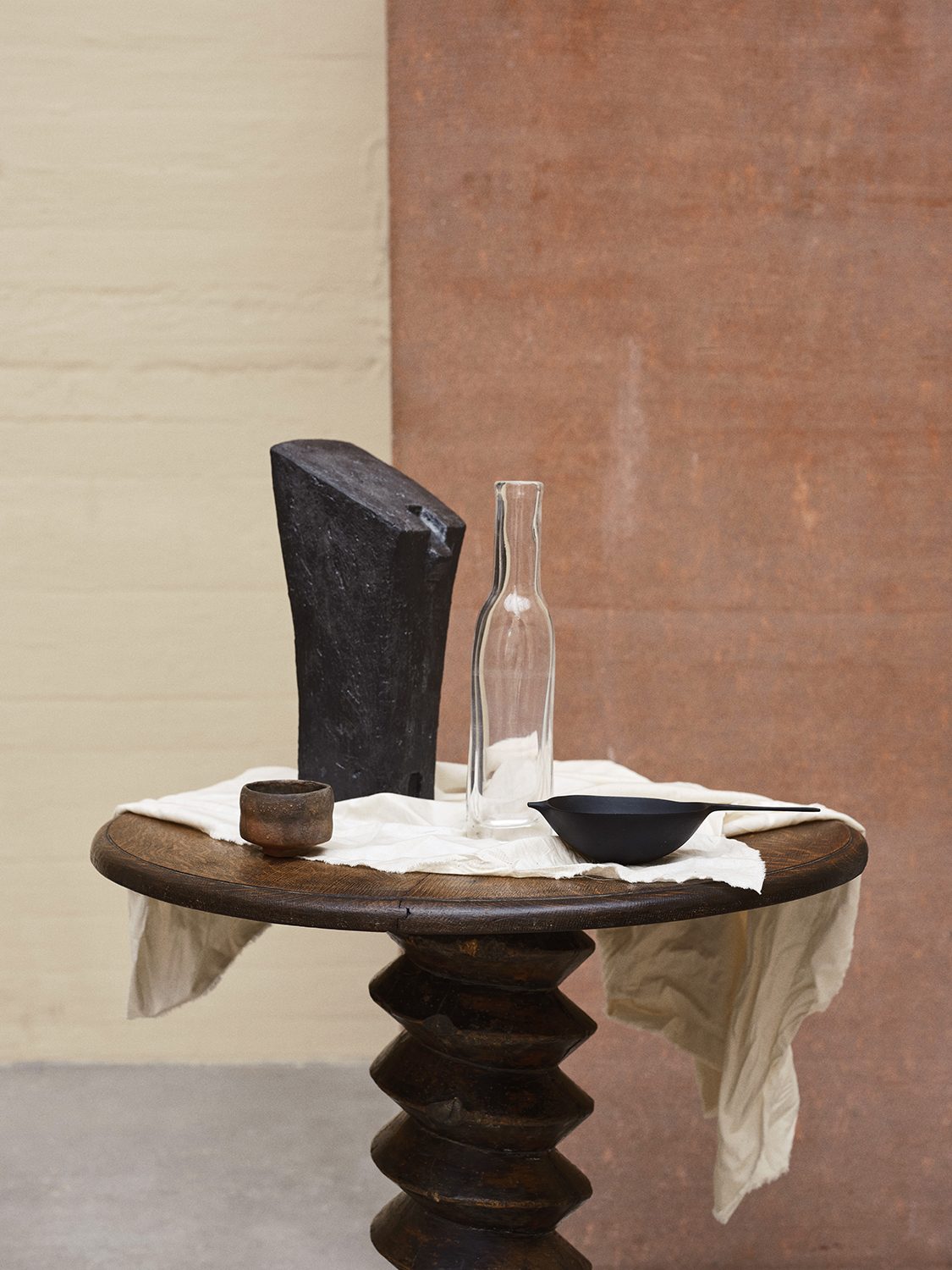 PEDESTAL Table from RUBY ATELIER. CHAWAN Cup by EMMANUEL ALEXIA from LE SENTIMENT DES CHOSES. Sculpture, Untitled, by GUNHILD AABERG from RUBY ATELIER. 0405 Bottle by NIKOLAJ MENTZE from FRAMA. EBONIZED CHERRY Bowl by DANIEL WESTER.
PEDESTAL Table from RUBY ATELIER. CHAWAN Cup by EMMANUEL ALEXIA from LE SENTIMENT DES CHOSES. Sculpture, Untitled, by GUNHILD AABERG from RUBY ATELIER. 0405 Bottle by NIKOLAJ MENTZE from FRAMA. EBONIZED CHERRY Bowl by DANIEL WESTER. 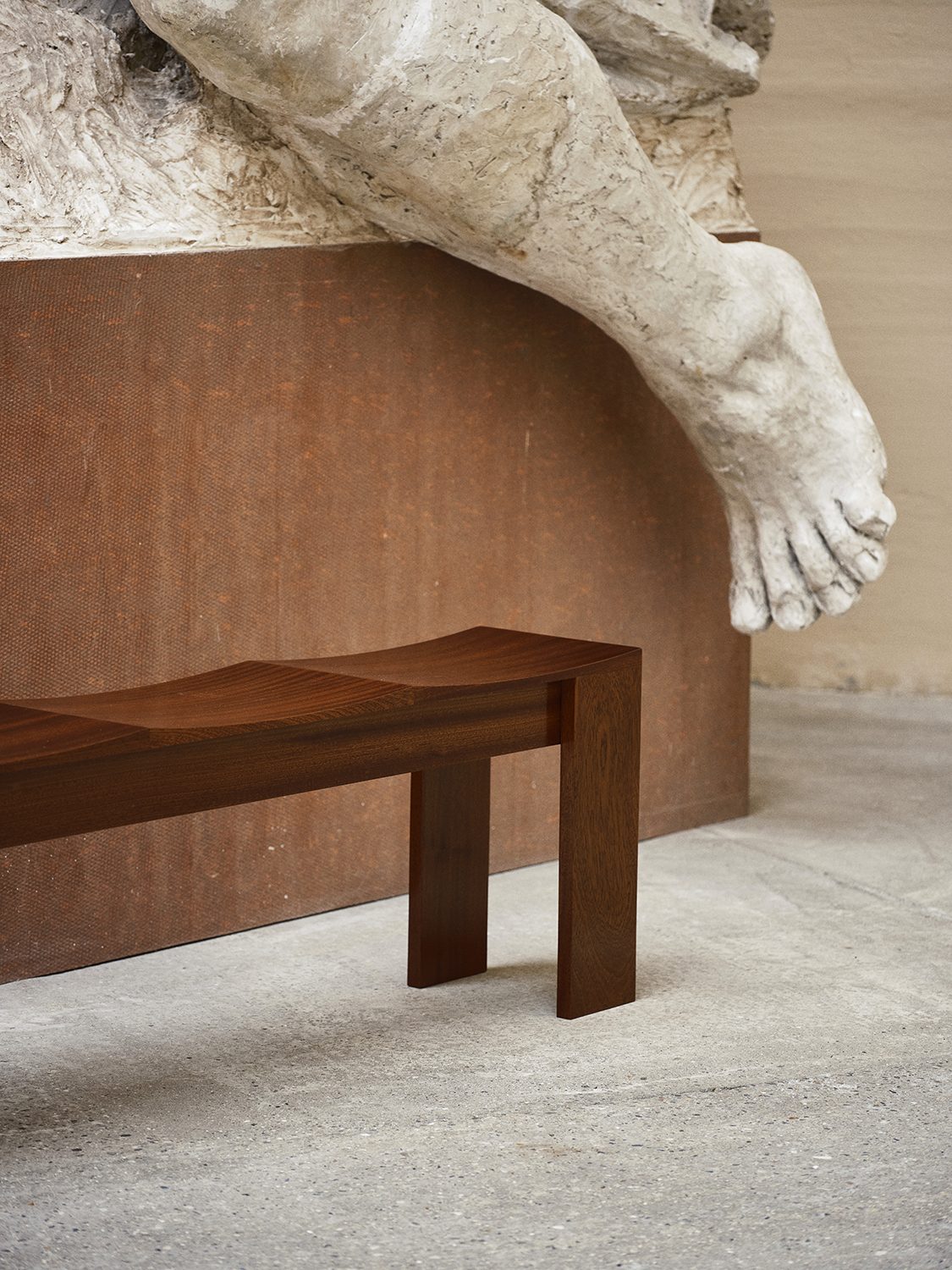 WAVE Bench by THOMAS WOLTMANN.
WAVE Bench by THOMAS WOLTMANN.To this day, the museum preserves the authenticity and spirit of Tegner, respecting his perspective of the space and his art. Because this is what he wanted. As he himself stated: “This place is in covenant with my soul.”
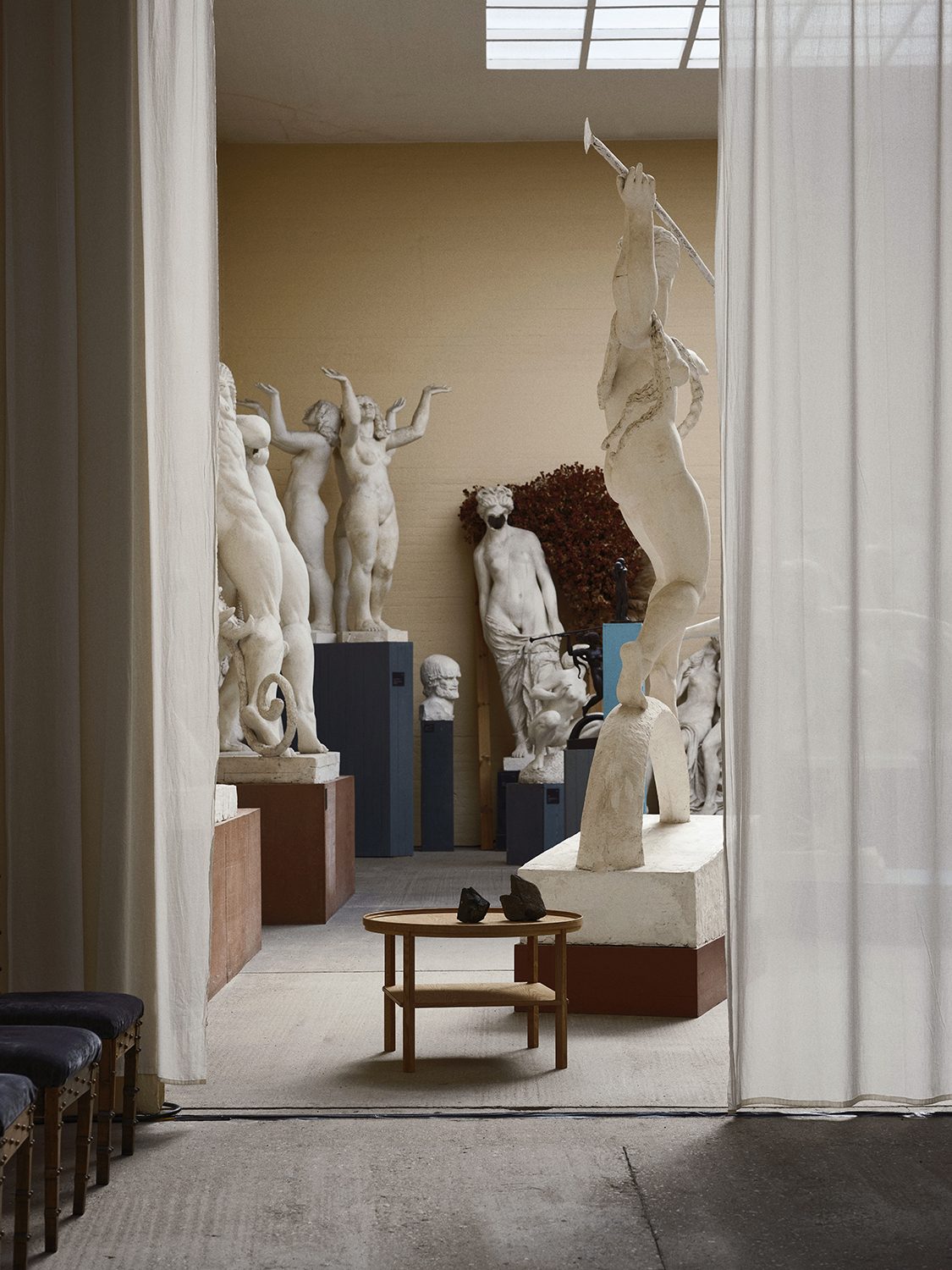 KK66870 Coffee Table by KAARE KLINT from CARL HANSEN & SØN.
KK66870 Coffee Table by KAARE KLINT from CARL HANSEN & SØN.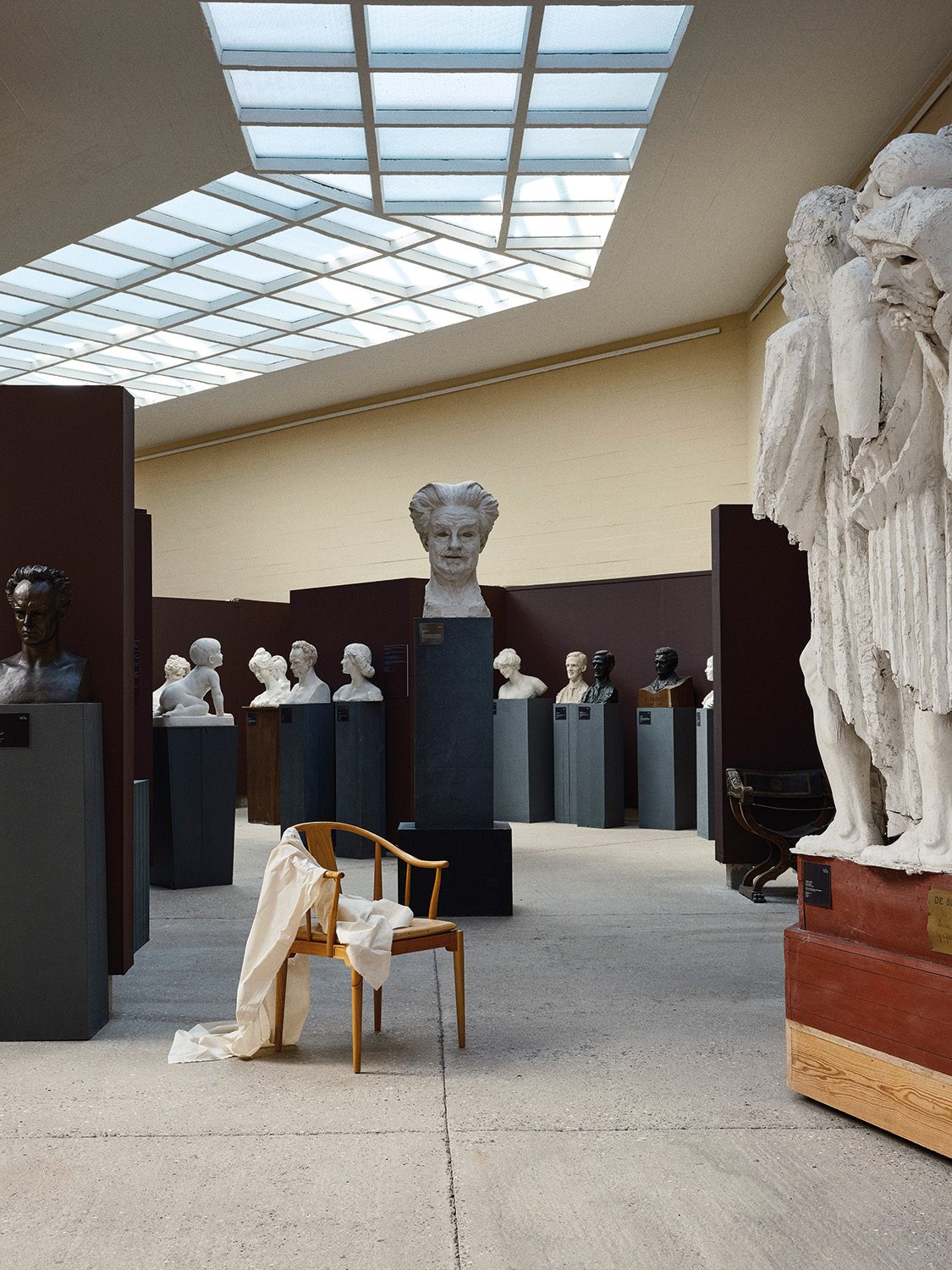 CHINA Chair by HANS J. WEGNER from FRITZ HANSEN.
CHINA Chair by HANS J. WEGNER from FRITZ HANSEN. 




